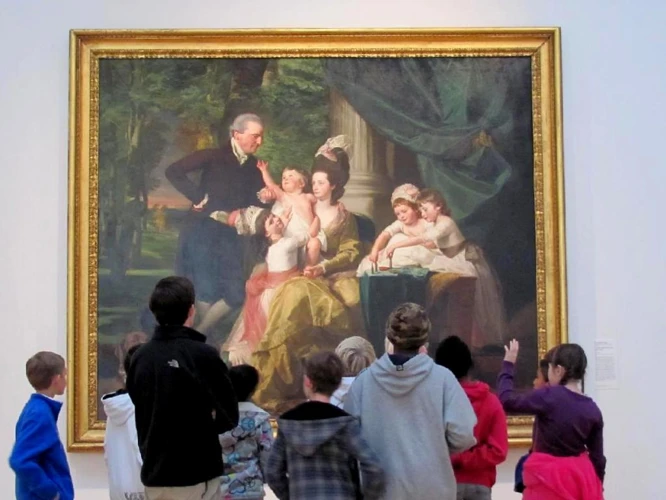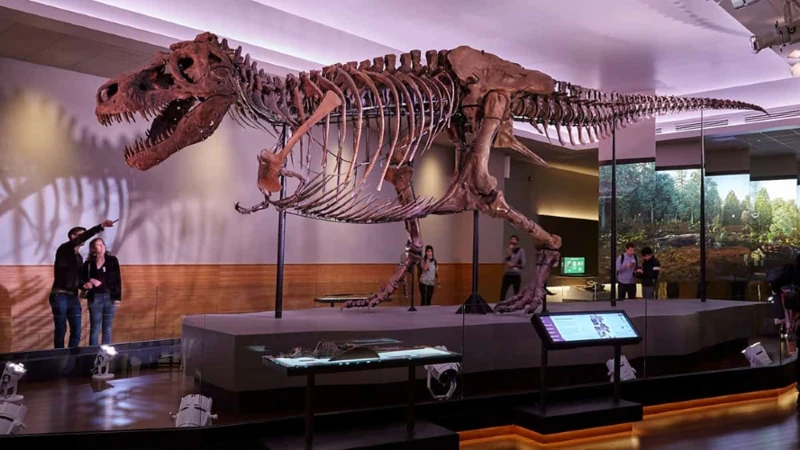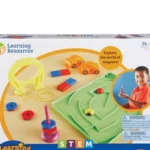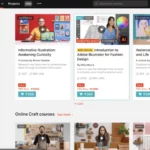Welcome to the world of museum exploration! Museums are not just buildings filled with artifacts and artworks; they are gateways to our rich cultural heritage. In this article, we will guide you through the intricacies of navigating museums as a student visitor. From preparing for your visit to engaging with exhibits and sharing your thoughts, we will provide you with tips and tricks to make the most out of your museum experience. So grab your notebook and get ready to embark on a journey of discovery and enlightenment. Let’s dive in!
Contents
- Preparing for Your Museum Visit
- Exploring Different Areas of the Museum
- Engaging with Exhibits and Objects
- Sharing Thoughts and Experiences
- Conclusion
-
Frequently Asked Questions
- 1. What can researching the museum before my visit help me with?
- 2. Are there any student discounts available at museums?
- 3. How can I plan my museum visit?
- 4. Why is it important to dress comfortably for a museum visit?
- 5. What necessary supplies should I bring to a museum?
- 6. How can using a map help me explore different areas of the museum?
- 7. What is a thematic approach to exploring a museum?
- 8. Why is it important to take breaks and rest areas during a museum visit?
- 9. How can museum staff recommendations enhance my museum visit?
- 10. What can I gain from reading labels and descriptions of exhibits?
- References
Preparing for Your Museum Visit

When planning your visit to a museum, it is important to prepare in advance to ensure a smooth and enjoyable experience. Here are some tips to help you make the most out of your museum visit:
1. Make a Plan: Before heading to the museum, take the time to research the museum’s website. Check the museum’s hours, exhibit descriptions, and any tour or dining options available. Discuss with your family or friends which exhibits are a must-see for everyone. This way, you can prioritize your time and make sure you don’t miss out on anything.
2. Dress Thoughtfully: Keep in mind that visiting a museum often involves a lot of walking and standing. It is essential to wear comfortable shoes. Dress in layers to adapt to the temperature inside the museum, as it can vary from room to room.
3. Arrive Early: To avoid crowds and make the most of your visit, it is recommended to arrive at the museum early in the morning. Not only will the museum be less crowded, but also kids tend to be less cranky earlier in the day.
4. Use the Cloakroom: Most museums provide cloakrooms where you can check your coats, umbrellas, and packages. Take advantage of this service to free yourself from unnecessary belongings and enjoy your visit with greater ease.
5. Map Your Route: Grab a museum map available at the entrance. If you are visiting with younger kids, start by visiting their chosen exhibit first. For older kids or adults, let them navigate the museum using the map. Take note of the locations of restrooms to avoid any inconvenience later on.
6. Take the Tour: Depending on the exhibit and the age of your group, consider joining a tour. Many museums offer guided tours led by knowledgeable and enthusiastic guides. These tours can bring the exhibits to life and provide valuable insights. Additionally, check the schedule for live demonstrations or movies that may enhance your museum experience.
Remember, the more you prepare for your museum visit, the more you can optimize your time and enjoy the exhibits to the fullest. By following these tips, you’ll be well-equipped to embark on a journey of discovery and appreciation of art, history, and culture.
For more information on student-friendly museums and discounts, you can check out this article on hidden gems and underrated museums with student discounts.
1. Research the museum
Before embarking on your museum visit, it is essential to conduct thorough research about the museum you plan to explore. This step will help you make the most of your visit by providing valuable information and insights. Here are some key aspects to consider during your research:
1.1 Museum Highlights: Visit the museum’s website and explore the highlights section. This will give you an idea of the significant artworks, artifacts, or exhibitions that the museum is known for. Look for renowned masterpieces or pieces created by your favorite artists. Knowing what to expect will enhance your overall experience.
1.2 Special Events: Check if the museum has any ongoing or upcoming special events during your visit. These can include temporary exhibitions, lectures, or art workshops. Attending these events can offer a unique and enriching experience, allowing you to delve deeper into specific themes or art styles.
1.3 Loaned Art Pieces: Find out if the museum has any art pieces on loan from other institutions. This information can help you plan your visit accordingly, as some galleries or sections may be temporarily closed or unavailable.
1.4 Museum Videos: If available, try to find videos about the museum. Many museums now provide virtual tours or informative videos on their website or social media platforms. Watching these videos can give you a sneak peek into the museum’s ambiance, collections, and exhibitions, allowing you to better visualize your upcoming visit.
By conducting thorough research before your museum visit, you can create a well-informed plan and ensure that you don’t miss out on any must-see artworks or events. Remember, the more you know about the museum, the more you can tailor your visit to your interests and preferences. Happy exploring!
(For more information on student-friendly museums, you can check out this article.)
2. Check for student discounts
As a student, it’s important to take advantage of the discounts available to you. Museums often offer special discounts for students, allowing you to explore their collections at a lower cost. Before visiting a museum, make sure to check if they offer student discounts. This can usually be found on their website or by contacting the museum directly. Student discounts can vary, but they often provide a significant reduction in admission prices.
By utilizing student discounts, you can save money while still immersing yourself in the world of art, history, or science. These discounts make it more affordable for students to access educational and cultural experiences that museums offer. So, don’t forget to bring your student ID with you when visiting museums and take advantage of the discounts available to you.
To find out more about museums that offer student discounts, you can check out our article “Cultured on a Budget: Museums with Student Discounts“. This article provides a comprehensive list of museums that offer discounts for students. By planning your visits to these museums, you can make the most out of your student budget while still enjoying the wonders of art, history, and science.
Remember, being a student doesn’t mean you have to miss out on exploring the cultural treasures of your city. Take advantage of the student discounts available to you and embark on a journey of discovery and enlightenment through the world of museums.
3. Plan your visit
Planning your visit to a museum is crucial to ensure a smooth and enjoyable experience. By taking the time to plan, you can make the most of your trip and see the objects that are most important to you. Here are some tips to help you plan your museum visit:
– Research the museum: Before you go, take some time to research the museum online. Look for information about the museum’s exhibits, collections, and any special events or programs they may have. This will give you an idea of what to expect and help you prioritize what you want to see.
– Check for museum maps: Many museums provide maps that you can either pick up at the information desk or download from their website. These maps can be incredibly helpful in navigating the museum and finding your way to the objects you want to see. Take a look at the map before your visit and plan out your route to ensure you don’t miss anything important.
– Consider virtual tours or museum apps: Some museums offer virtual tours or have their own apps that you can use to explore their collections. Take advantage of these resources to get a preview of what the museum has to offer and familiarize yourself with the layout. This can help you plan your visit more effectively.
– Watch tours on YouTube: If you want to learn more about the museum and its exhibits before your visit, consider watching tours of previous exhibits or existing spaces on YouTube. Many museums have their own YouTube channels where they share videos that provide insights into their collections. This can give you a better idea of what to expect and help you decide which objects you are most interested in seeing.
– Plan your route: Once you have gathered all the necessary information, plan your route through the museum. Identify the objects or exhibits that are a priority for you and make sure to include them in your route. This way, you can ensure that you won’t be disappointed if you don’t have time to see everything.
– Buy a city museum pass: If you are visiting a major city with multiple museums, consider buying a city museum pass. These passes often offer discounts for visiting multiple museums and may include additional benefits such as free or reduced admissions to other attractions. Check with the tourism office of the city you are visiting to see if they offer such passes.
By taking the time to plan your visit, you can make the most of your museum experience and ensure that you see the objects that are most important to you. So, grab your map, do your research, and get ready for an enriching and enjoyable visit to the museum!
For more information on museums to visit as a student, check out this article: 10 Must-Visit Museums for Students
4. Dress comfortably
When visiting a museum, it is important to dress comfortably so that you can fully enjoy your experience without any distractions. Here are some tips on how to dress appropriately for a museum visit:
1. Choose comfortable shoes: Since you will be doing a lot of walking, opt for shoes that are both stylish and comfortable. Loafers, boat shoes, or boots are good choices. Make sure your shoes are broken in to avoid any discomfort.
2. Wear appropriate bottoms: Select bottoms that allow for ease of movement. Skirts, khakis, corduroy pants, or dress pants are all suitable options. If you prefer dresses, make sure to cover your shoulders with a sweater or blazer. Keep your skirt length around your knees for comfort while walking.
3. Consider the weather: Dress according to the weather conditions. If it’s a hot day, choose lightweight and breathable fabrics. On cooler days, layer your clothing with a jacket or cardigan.
4. Dress slightly nicer for appointments: If you have scheduled appointments with advisers or professors during your museum visit, it is a good idea to dress slightly nicer than you would for just a tour. Polished shoes and dark, nice jeans or dress pants are appropriate for these occasions.
Remember, the key is to dress comfortably while still looking presentable. Enjoy your museum visit and make the most of your experience!
For more information on art and museums, you can check out the article “Art Beyond Canvas: Museums and Their Unique Art“.
5. Bring necessary supplies
When embarking on a museum visit, it’s important to come prepared with the necessary supplies to ensure a smooth and enjoyable experience. Here are some essential items to consider bringing with you:
1. Backpack: Bring a comfortable backpack to carry all your supplies and keep your hands free for exploration.
2. Water bottle: Staying hydrated is crucial, especially if you’ll be spending a significant amount of time walking and exploring the museum.
3. Snacks: Pack some lightweight and energizing snacks to keep you fueled throughout the day. Granola bars, nuts, and dried fruit are great options.
4. Notebook and pen: Take notes on interesting exhibits, jot down questions, or sketch any artworks that catch your eye. This will help you remember and reflect on your experience later.
5. Camera or smartphone: Capture special moments and artworks that inspire you. Just make sure to check the museum’s photography policy beforehand.
6. Extra layers: Museums can sometimes be cool or heavily air-conditioned. Pack a light jacket or sweater to ensure you stay comfortable throughout your visit.
7. Comfortable shoes: You’ll be doing a lot of walking, so wear comfortable shoes that will support your feet throughout the day.
8. Map or guidebook: Some museums provide maps or guidebooks at the entrance, but it’s always helpful to have your own copy for easy reference.
Remember, each museum visit is unique, so consider the specific needs of the museum you’ll be visiting. By being prepared with these necessary supplies, you’ll be able to fully immerse yourself in the museum experience and make the most of your visit.
If you’re interested in learning more about the educational benefits of visiting museums, check out this article on how history and science museums can educate and entertain students.
Exploring Different Areas of the Museum

When you step into a museum, it can feel overwhelming with the vast array of exhibits and galleries. However, with a little strategy and planning, you can navigate through the museum efficiently and make the most of your visit.
1. Start with a map
Before you begin your exploration, it’s essential to grab a museum map. This will give you an overview of the different areas and exhibits within the museum. Take some time to familiarize yourself with the layout and identify the sections that interest you the most. Having a map will help you navigate through the museum and make sure you don’t miss any must-see exhibits.
2. Follow a thematic approach
Rather than aimlessly wandering through the museum, consider following a thematic approach. Choose a specific theme or topic that intrigues you and focus your exploration on related exhibits. This will give your visit a sense of purpose and allow you to delve deeper into a particular subject. For example, if you’re interested in ancient civilizations, you can explore the sections dedicated to Egypt, Greece, and Rome.
3. Take breaks and rest areas
Exploring a museum can be physically and mentally tiring, so it’s important to take breaks and rest areas. Museums often have designated seating areas where you can relax and recharge. Use these moments to reflect on what you’ve seen, jot down any interesting observations, or simply take in the ambiance of the museum. Taking breaks will help you maintain focus and make your visit more enjoyable.
4. Ask museum staff for recommendations
Don’t hesitate to seek guidance from museum staff. They are knowledgeable about the exhibits and can provide valuable insights and recommendations. If you’re unsure where to start or want to know about hidden gems in the museum, approach a staff member and ask for their suggestions. They might point you towards lesser-known exhibits or share interesting stories behind certain artworks.
As you explore different areas of the museum, keep in mind that each exhibit offers a unique experience. Take your time to appreciate the artwork, read the descriptions, and immerse yourself in the stories they tell. Enjoy the journey of discovery and let the museum ignite your curiosity and imagination.
Related: Unleashing Creativity: Museums as Inspiration for Student Artists
1. Start with a map
When you arrive at the museum, the first thing you should do is grab a map. Maps are usually available at the information desk or can be accessed online before your visit. Having a map will help you navigate the museum more efficiently and ensure that you don’t miss any important exhibits or areas of interest.
Tip: Take the time to study the map at home with the help of the Louvre Map or any other available map of the museum. This will allow you to familiarize yourself with the layout and plan your visit in a way that makes sense from a logistics point of view. By mapping out your itinerary in advance, you can avoid walking unnecessary kilometers and optimize your time at the museum.
Additionally, some museums offer virtual tours or have their own apps that you can download. These digital resources can provide you with a virtual experience of the museum and help you plan your visit more effectively.
If you’re visiting a large museum like the Louvre, it can be overwhelming to try and see everything in one visit. A helpful strategy is to pick a specific department or area of interest and focus your attention on that. For example, you could choose to explore the Italian Paintings department or the Egyptian artifacts section. This focused approach allows you to delve deeper into a specific subject and get the most out of your visit.
Remember to take breaks during your museum exploration and make use of rest areas when you come across them. Museums can be quite large and require a lot of walking, so it’s important to pace yourself and take care of your physical well-being.
Pro tip: If you’re unsure about which exhibits or areas to prioritize, you can watch tours of previous exhibits or existing spaces in the museum on platforms like YouTube. These virtual tours can give you a better idea of what to expect and help you decide which areas you are most interested in exploring.
So, start your museum visit by getting a map and familiarizing yourself with the layout. Plan your itinerary based on your interests and use the map to guide you through the museum. By starting with a map, you’ll have a clear sense of direction and be able to make the most of your museum experience.
2. Follow a thematic approach
When exploring a museum, one effective approach is to follow a thematic approach. This means choosing a specific theme or topic that interests you and using it as a guiding thread throughout your visit. By selecting a theme that resonates with you, you can enhance your understanding and appreciation of the objects and exhibits on display.
A well-chosen theme allows you to connect different objects and areas of the museum, creating a cohesive and meaningful experience. It helps you see the bigger picture and understand how various artifacts relate to each other. For example, you could choose a theme like “meaning” and explore how different objects convey messages about a specific time period or social class.
To implement this approach, start by carefully choosing your theme, objects, and questions. Consider what interests you the most and what you hope to learn or discover during your visit. Formulate an introduction and conclusion to provide context for your theme and give a short summary of it at the beginning of your tour.
As you move through the museum, look for objects, posters, audiovisual equipment, and other museographical elements that align with your theme. Incorporate these elements into your exploration to illustrate and deepen your understanding of the chosen topic. Remember that the physical arrangement of the objects is not as important as the connections you draw through your theme.
Following a thematic approach also allows you to tackle more complex topics that may initially seem difficult. It can help you explore the role and mission of the museum itself, shedding light on why certain artifacts are collected and displayed. By provoking thought and creating awareness, this approach can enhance your overall museum experience.
By following a thematic approach, you can create a well-structured tour that connects different objects and areas of the museum. Choose a theme that aligns with your interests, carefully select relevant objects, and incorporate museographical elements to illustrate your chosen topic. This approach allows for a deeper understanding of the museum’s collection and can help you discover something new and meaningful.
3. Take breaks and rest areas
Exploring a museum can be a physically and mentally demanding activity, especially for students on a field trip. To ensure that you have a fulfilling and enjoyable experience, it’s important to take breaks and rest areas throughout your visit.
Museum fatigue is a real phenomenon that can drain your energy after a couple of hours of viewing art and exhibits. That’s why it’s essential to listen to your body and give yourself time to recharge. Look out for designated rest areas within the museum where you can sit down, relax, and take a breather. These rest areas often provide comfortable seating and a peaceful atmosphere, allowing you to rejuvenate before continuing your exploration.
If there are no designated rest areas, find a quiet corner or bench where you can take a moment to rest. Sit down, close your eyes, and take deep breaths to clear your mind and regain your focus. Use this time to reflect on the art you’ve seen so far and absorb the beauty and significance of what you’ve experienced.
Taking breaks also gives you the opportunity to discuss your thoughts and observations with your fellow students or travel partners. Visit the museum’s cafe or snack area for a coffee, a glass of wine, or a cheese plate. Enjoy a leisurely conversation, sharing your insights and interpretations of the exhibits you’ve encountered. These moments of reflection and discussion can enhance your understanding and appreciation of the artwork, as well as deepen your connection with your companions.
Remember, museums are not meant to be rushed through. Allow yourself the luxury of time to fully immerse yourself in the museum experience. Don’t worry about trying to see everything in one go. Instead, focus on quality over quantity, taking the time to savor and appreciate each exhibit that captures your interest.
So, as you plan your museum visit, make sure to include breaks and rest areas in your itinerary. Listen to your body, take your time, and embrace the opportunity to rest, reflect, and share your thoughts. By doing so, you’ll create a more enriching and enjoyable museum experience for yourself and those around you.
4. Ask museum staff for recommendations
When visiting a museum, don’t hesitate to seek recommendations from the knowledgeable museum staff. They are passionate about their subject matter and love sharing their expertise with visitors like you. The employees and volunteers at the museum are more than happy to answer your questions and provide insights that go beyond what you can find on placards or through a search engine.
Engaging with the staff can also lead to personal demonstrations or mini tours that enhance your experience. Take advantage of their willingness to teach and guide you through the museum. They can reveal interesting secrets about the pieces in the galleries that you might not discover on your own.
To make the most of your interaction with museum staff, consider asking for recommendations on what objects or exhibits you should prioritize during your visit. They can help you plan your route and ensure that you don’t miss out on the highlights of the museum.
Remember that museum fatigue is a real thing, so keeping your visits relatively short is important. By asking for recommendations, you can optimize your time and focus on the most significant and captivating parts of the museum.
Don’t be shy to approach the staff stationed in the galleries. They have a deep familiarity with the pieces on display and can provide you with intriguing insights and stories about them. Their firsthand experience with the artworks and artifacts can enrich your understanding and appreciation of the museum’s collection.
So, when you’re exploring the museum, make it a point to engage with the museum staff and ask for their recommendations. Their expertise and passion for their subject matter can truly enhance your museum experience and make it more memorable.
Engaging with Exhibits and Objects

When visiting a museum, one of the most important aspects is engaging with the exhibits and objects on display. This allows you to truly immerse yourself in the experience and gain a deeper understanding of the cultural significance and historical context of each piece. Here are some tips to help you make the most out of your engagement:
1. Read labels and descriptions: Take the time to read the labels and descriptions accompanying each exhibit. These provide valuable information about the object’s origin, significance, and historical background. Pay attention to key details and make note of any interesting facts that catch your attention.
2. Use audio guides or museum apps: Many museums offer audio guides or have their own dedicated apps that provide additional information about the exhibits. Take advantage of these resources to enhance your understanding. Listen to the audio guide or explore the app’s content as you explore the exhibit, allowing you to delve deeper into the subject matter.
3. Take notes or sketch: If you’re allowed, consider taking notes or sketching the exhibits that capture your interest. This not only helps you remember the details later but also encourages a more active and personal engagement with the objects. Jot down your thoughts, observations, and any questions that arise during your exploration.
4. Ask questions and seek deeper understanding: Don’t be afraid to ask questions! Museum staff are there to assist you and provide further insights. Engage in conversations with them to seek a deeper understanding of the exhibits. Ask about the object’s significance, its historical context, or any interesting stories associated with it. This interaction can greatly enrich your museum experience.
By actively engaging with the exhibits and objects, you can develop a personal connection with the artifacts and gain a more profound appreciation for their cultural and historical importance. Remember, the goal is to encourage a deep and personal engagement, so take your time, explore, and allow yourself to be captivated by the wonders of the museum.
1. Read labels and descriptions
When visiting a museum, it is essential to take the time to read the labels and descriptions that accompany the exhibits. These labels provide valuable information about the artwork or object and enhance your understanding and appreciation of it.
By reading the labels, you can learn about the historical context, artistic techniques, and significance of the piece. The labels may also include interesting facts or anecdotes that add depth to your experience and spark your curiosity.
Pay attention to the details and look for keywords that stand out, such as the artist’s name, the period or style of the artwork, or any specific themes or symbolism mentioned. These details can help you make connections and develop a deeper understanding of the artwork.
Labels often provide insights into the artist’s intentions or the curator’s interpretation of the piece. This can offer you a new perspective and provoke thought-provoking questions or discussions with fellow visitors.
Remember to read the descriptions with an open mind, allowing yourself to be immersed in the artwork’s world. Let the words guide your imagination, enabling you to visualize the artist’s vision and the story behind the piece.
Reading labels and descriptions is a way to engage with the artwork on a more profound level, allowing you to appreciate the beauty and significance of each piece in the collection. So, take your time, absorb the information provided, and let it enrich your museum experience.
2. Use audio guides or museum apps
When visiting a museum, one of the most valuable tools at your disposal is the use of audio guides or museum apps. These technological advancements can greatly enhance your experience and provide you with a wealth of information about the exhibits.
Audio guides are handheld devices that offer spoken commentary about the objects on display. They provide context, background information, and interesting tidbits that can bring the exhibits to life. By using audio guides, you can delve deeper into the stories behind the artwork or artifacts, gaining a more comprehensive understanding of their significance.
Museum apps, on the other hand, offer a digital alternative to traditional audio guides. These apps can be downloaded onto your smartphone or tablet, allowing you to access the information at your convenience. Many of these apps provide GPS mapping, helping you navigate through the museum and locate specific exhibits. Some even offer virtual reality experiences, transporting you back in time to experience historical events firsthand.
Not only do audio guides and museum apps provide educational benefits, but they also enhance the overall museum experience. By engaging your senses through storytelling and immersive technology, these tools can captivate your attention and make the exhibits more memorable.
It’s important to note that while audio guides and museum apps are a fantastic resource for all visitors, they can be particularly beneficial for individuals with visual impairments. By listening to the detailed descriptions of the objects, visually impaired visitors can gain a deeper understanding and appreciation for the exhibits. However, it’s essential to ensure that the content is accessible and provides clear descriptions to create an inclusive experience for all visitors.
So, before your museum visit, be sure to research the availability of audio guides or museum apps. Check the museum’s website or inquire at the ticket counter for information on how to access these resources. Familiarize yourself with how they work and take advantage of the enriching narratives they offer. By using audio guides or museum apps, you can enhance your museum visit and gain a deeper appreciation for the exhibits on display.
3. Take notes or sketch
When exploring a museum, it’s important to take notes or sketch to enhance your understanding and make the most out of your visit. By documenting your observations and thoughts, you can create a personal record of your experience and engage with the artworks or objects on a deeper level. Here are some tips for effective note-taking or sketching:
1. Use a travel journal: Bring along a small notebook dedicated to your museum visits. Treat it as your personal travel journal, where you can jot down your impressions, memories, and reflections. You can also add drawings, short sentences, or even paste in photos to capture the sights and sounds of the museum.
2. Key takeaways: Use your notebook to record the key takeaways from the tour or your response to the thinking routine ‘I used to think…now I think…’ This will help you reflect on your initial assumptions and how your perspective has changed or evolved through the museum experience.
3. Wonderings: Write down any questions or wonderings that arise during your visit. Whether it’s about a particular subject, theme, or artwork, noting down your curiosities will allow you to explore them further later on. You can also ask museum staff for assistance in finding answers to your questions.
4. Create stories together: If you’re visiting the museum with a group, try a collaborative activity like creating stories based on the artworks you encounter. Divide into smaller groups and come up with a story in response to a specific artwork. Assign a notetaker to capture the group’s discussion and later share or even act out the stories.
Remember, your notebook is not only a tool for planned activities but also for spontaneous moments of inspiration. It allows you to capture your thoughts, observations, and ideas in the moment. So, grab your notebook, unleash your creativity, and let the museum experience unfold before your eyes.
4. Ask questions and seek deeper understanding
When exploring a museum, it’s important to go beyond just observing and reading the labels. To truly engage with the exhibits and objects, ask questions and seek deeper understanding. Children naturally ask questions, but as adults, we can encourage this curiosity by using explicit prompts and supporting children in generating their own questions (King, 1994; Rosenshine et al., 1996).
Instead of simply asking, “Do you have any questions?”, try asking, “What questions do you have?” This prompts children to analyze what they don’t know and encourages them to generate their own questions. The ability to evaluate one’s knowledge develops through practice, and by helping children recognize the questions to ask, we can effectively support their development (Kuhn and Pearsall, 2000; Chin and Brown, 2002).
Asking questions is not only beneficial for children but for all visitors. Don’t hesitate to ask the museum staff for recommendations or for further information about the exhibits. The employees and volunteers at the museum are passionate about their subjects and love answering questions. Take advantage of their expertise rather than solely relying on placards and search engines (8).
There are two types of questions that are particularly successful in eliciting authentic and diverse responses: personal questions and speculative questions. Personal questions help visitors connect their own experiences to the objects on display. Speculative questions, on the other hand, ask visitors to imagine scenarios involving objects or ideas that are foreign to their experience. Both types of questions can lead to deeper understanding and engagement with the exhibits (8).
By asking questions and seeking deeper understanding, you not only enhance your own learning experience but also create opportunities for personal demonstrations and mini personal tours. Museum staff are eager to share their expertise and teach visitors. So, don’t be afraid to engage with them and take advantage of their knowledge and enthusiasm (8).
Remember, museum visits can sometimes be tiring, so keep your visits relatively short to avoid “museum fatigue.” Take breaks and rest in designated areas to recharge and process the information you’ve gathered. And always dress comfortably to ensure a pleasant and enjoyable museum exploration (8).
When exploring a museum, it’s not just about observing the exhibits, but also about engaging with them and sharing your thoughts and experiences. This is an important part of the museum visit as it allows you to deepen your understanding and connect with others who share similar interests. Here are a few ways you can enhance your experience by sharing:
One of the best ways to gain new perspectives and insights is by discussing the exhibits with fellow students. Take the time to engage in conversations, ask questions, and share your thoughts. You may find that others have noticed details or interpretations that you may have missed. It’s a great opportunity to learn from each other and broaden your understanding of the artworks or artifacts.
Another way to share your thoughts and experiences is by writing a reflection or journal entry. Take a moment to sit down in a quiet area of the museum and jot down your thoughts, feelings, and observations. This can be a personal reflection or a more analytical piece, depending on your interests. Writing can help you process the information and create a lasting record of your experience. You can also choose to share your writing with others, either online or in a discussion group, to further engage with the museum community.
By actively participating in discussions and writing reflections, you contribute to a collective understanding of the exhibits and create a sense of community within the museum. Sharing your thoughts and experiences not only enriches your own visit but also enhances the overall museum experience for others.
Remember, every visitor brings a unique perspective, and by sharing your thoughts, you contribute to a diverse and vibrant conversation. So don’t hesitate to engage with others and express your ideas. Enjoy the journey of exploration and discovery, and let the museum experience inspire and transform you.
1. Discuss with fellow students
Visiting a museum is always more enjoyable when shared with others. Take the opportunity to discuss the artworks and exhibits with your fellow students. This allows for a richer and more diverse perspective on the pieces you encounter. Engage in conversations about what you see, sharing your thoughts and interpretations.
By discussing with your peers, you can explore different viewpoints and gain new insights into the art. You may notice details or meanings that you hadn’t considered before. Encourage each other to think critically and ask questions about the artwork.
Remember, discussing art doesn’t require specialized language or knowledge. Use words that you would use to describe friends, frenemies, or celebrities. Think beyond simple categories like “good” or “bad” and try to find artworks that match those descriptions. Challenge each other to think creatively and express your thoughts in a way that everyone can understand.
Engaging in discussions with fellow students also allows you to practice your communication and analytical skills. It’s an opportunity to learn from each other and develop a deeper understanding and appreciation for art.
So, as you explore the museum, don’t hesitate to strike up conversations with your classmates. Share your impressions, debate different interpretations, and enjoy the collective experience of discovering and discussing art together.
2. Write a reflection or journal entry
Visiting a museum is not just about observing and appreciating the art or artifacts on display; it’s also an opportunity for personal reflection and self-expression. Taking the time to write a reflection or journal entry can enhance your museum experience and allow you to delve deeper into your thoughts and emotions.
As you explore the museum, take note of anything that catches your attention, whether it be a painting that resonates with you or an interesting detail that stands out. Use your notebook as a personal travel journal, documenting your impressions, memories, and even the weather. Feel free to include sketches or drawings to capture the essence of what you see.
You can also use the journal to send a postcard home, describing the scene where you are and sharing your excitement and observations. Choose someone special to receive your postcard and let them experience the museum vicariously through your words.
In addition to capturing the physical aspects of your museum visit, take the opportunity to reflect on the key takeaways from the tour or any shifts in your thinking. Use the journal to respond to the thinking routine ‘I used to think…now I think…’ This will help you track your personal growth and development throughout your museum exploration.
Remember, there are no right or wrong answers when it comes to reflection and journaling. It’s a personal endeavor that allows you to express yourself and make sense of your experiences. So, take your time, find a quiet corner, and let your thoughts flow onto the pages of your journal.
By writing a reflection or journal entry, you not only deepen your understanding and appreciation for the art and artifacts, but you also create a lasting record of your museum journey. It becomes a tangible reminder of the sights, sounds, and emotions experienced during your visit.
So, grab your pen and let your thoughts and feelings spill onto the pages of your personal travel journal. Happy reflecting and happy exploring!
Conclusion
Congratulations, you have reached the end of our guide on navigating museums as a student visitor. By following the tips and tricks outlined in this article, you are well-equipped to make the most out of your museum experience. Remember, museums are not just buildings filled with artifacts and artworks; they are windows into our cultural heritage.
Throughout your visit, it is important to prepare beforehand by researching the museum and planning your visit. Take advantage of any student discounts available and dress comfortably to ensure a pleasant experience. Bring necessary supplies such as a notebook, pen, and any coloring sheets or activities provided by the museum.
As you explore different areas of the museum, use a map to navigate and consider taking a thematic approach to fully immerse yourself in the exhibits. Don’t forget to take breaks and utilize rest areas to rest and reflect on what you have seen. If you’re unsure of which exhibits to visit, don’t hesitate to ask museum staff for recommendations—they may have interesting secrets to share about the pieces.
When engaging with exhibits and objects, take the time to read labels and descriptions to gain a deeper understanding of the artwork. Utilize audio guides or museum apps for additional information and consider taking notes or sketching to capture your thoughts and impressions. Don’t be afraid to ask questions and seek a deeper understanding of the art and its broader relationship to society.
After your museum visit, take the opportunity to share your thoughts and experiences. Discuss the exhibits with fellow students to gain different perspectives and insights. Consider writing a reflection or journal entry to further process your museum experience and how it contributes to your understanding of art, art history, and society.
Remember, museums play a vital role in preserving our human heritage, and by visiting them, you are honoring and respecting that heritage. The privilege of visiting museums should be extended to all, with museums providing free admission for those 17 years of age and younger. The artworks inside museums are part of our shared cultural legacy, but they are never as great as the young person whose gaze brings them to life.
In conclusion, make the most of your museum visits by being prepared, exploring different areas, engaging with exhibits, and sharing your thoughts and experiences. Museums offer a wealth of knowledge and inspiration, and by immersing yourself in their offerings, you are sure to have enriching and enlightening experiences. Enjoy your journey of discovery and continue to embrace the wonder of museums.
Frequently Asked Questions
1. What can researching the museum before my visit help me with?
Researching the museum before your visit can help you familiarize yourself with its exhibits, special events, and any temporary exhibitions that may be happening. It can also help you plan your visit more effectively.
2. Are there any student discounts available at museums?
Yes, many museums offer student discounts. It’s always a good idea to check if the museum you plan to visit has any special rates or discounts for students.
3. How can I plan my museum visit?
You can plan your museum visit by deciding which exhibits or areas of the museum you want to prioritize, checking the museum’s opening hours, and considering any guided tours or programs that may be available.
4. Why is it important to dress comfortably for a museum visit?
Dressing comfortably for a museum visit allows you to explore the exhibits more easily and enjoy your visit without any discomfort. It’s important to wear shoes that are suitable for walking and clothing that allows for flexibility and movement.
5. What necessary supplies should I bring to a museum?
Some necessary supplies to bring to a museum include a notebook and pen for taking notes or sketching, a water bottle to stay hydrated, and any specific materials or tools required for certain activities or workshops.
6. How can using a map help me explore different areas of the museum?
Using a map can help you navigate through the museum, locate specific exhibits or areas of interest, and plan your route to make the most efficient use of your time.
7. What is a thematic approach to exploring a museum?
A thematic approach to exploring a museum involves focusing on specific themes or topics that interest you and seeking out exhibits or artworks related to those themes. It allows for a more focused and meaningful museum experience.
8. Why is it important to take breaks and rest areas during a museum visit?
Taking breaks and utilizing rest areas during a museum visit allows you to rest and recharge, preventing fatigue and ensuring that you can fully appreciate and engage with the exhibits. It also provides an opportunity for reflection and contemplation.
9. How can museum staff recommendations enhance my museum visit?
Museum staff often have in-depth knowledge about the exhibits and can provide valuable insights, recommendations, and stories related to specific pieces or areas of the museum. Their recommendations can help you discover hidden gems and gain a deeper understanding of the artworks.
10. What can I gain from reading labels and descriptions of exhibits?
Reading labels and descriptions of exhibits can provide you with important contextual information, historical background, and insights into the artistic techniques or themes explored in the artworks. It helps you understand and appreciate the exhibits on a deeper level.







